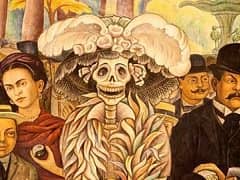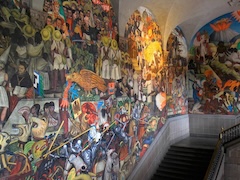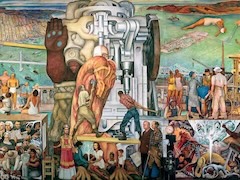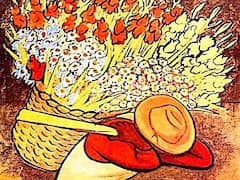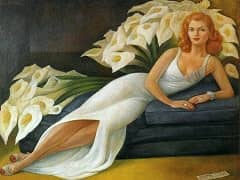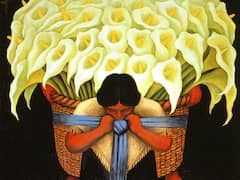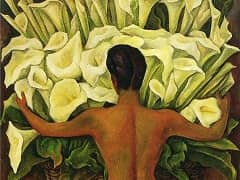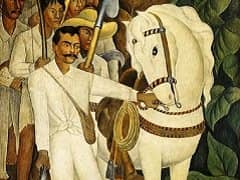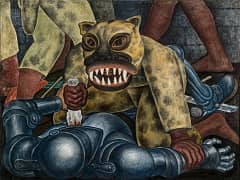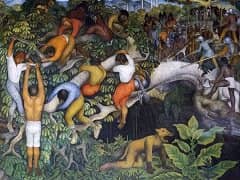Portrait of Lupe Marin, 1938 by Diego Rivera

As Diego was becoming a famous international artist, his social and political life was every bit as colorful as his professional one.
Diego Rivera was a Marxist idealist, like many young intellectuals of the early 20th Century, so it was natural that he should choose friends who shared his beliefs. The Russian Bolshevik Revolution in 1917 had transitioned
Marxism into Communism so Diego formally joined the Mexican Communist Party at the end of 1922. His first wife whom he married in 1923 was also a Communist who was introduced to him by another young Communist female friend of his.
Guadalupe Marin, nicknamed Lupe, shared more with Diego than just his political beliefs. She was an exotic beauty possessed with wild emotions. Unfortunately, her violent jealousy of Diego was even more than his passionate
nature could eventually bear. On more than one occasion, she tore up his drawings in a fit of rage when Diego paid the slightest attention to other women. In the beginning, there is no doubt, that Diego provoked Lupe for his
own amusement. Even jealous of his love for Pre-Columbian sculpture, in a moment of high drama, she ground up a prized statue and fed it to him in his soup. As time wore on, however, he grew tired of it and later said, "Lupe
was a beautiful, spirited animal, but her jealousy and possessiveness gave our life together with a wearying, hectic intensity." They had two daughters Lupe, born in 1924 and Ruth, born in 1926.
In this magnificent portrait of Lupe Marin from whom he separated the previous decade, Rivera again reveals his profound artistic debt to the European painting tradition. Utilizing a device deployed by such artists as
Diego Velazquez, Manet, and Gauguin - and which Rivera would himself use in his 1949
portrait of his daughter Ruth - he portrays his subject partially in reflection through his depiction of a mirror in the background. The painting's coloration and the subject's expressive hands call to mind another artistic hero,
El Greco, while its composition and structure suggest the art of Paul Cézanne.

